Hookless Rim and Tire Compatibility Update
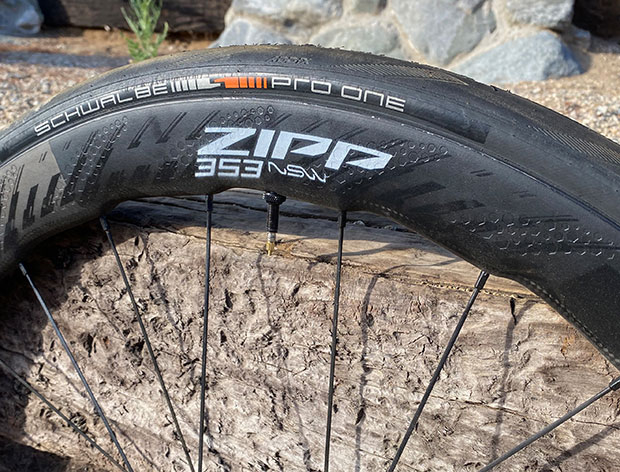
What pressure should I run in my bike tires? Among the various data archives we maintain around here is the Hookless Wheel & Tire Compatibility Chart. Why is this chart necessary? I’ll get to that.
First, what is the update I’m announcing today? The main new feature are “sample” pressures that have been added. If you look at this chart, what did appear when a tire and wheel were referenced was either a blank cell, which meant you should not run this tire with that wheel, or a cell populated with OK, which meant that tire in that width with that wheel was a match. The OK has been replaced by a number and that number is a sample pressure formatted as PSI. For example, one wheelset I prefer is a Zipp 353 NSW with a 30mm Schwalbe Pro One tire (mine is pictured above), and if you look at our chart (a screenshot of our chart is just below) what you’ll see is 56psi as a sample pressure (for a rider slightly lighter than I am). In reality it would be an average of 56psi, so, on my road bike perhaps 54psi on the front and 58psi on the back.
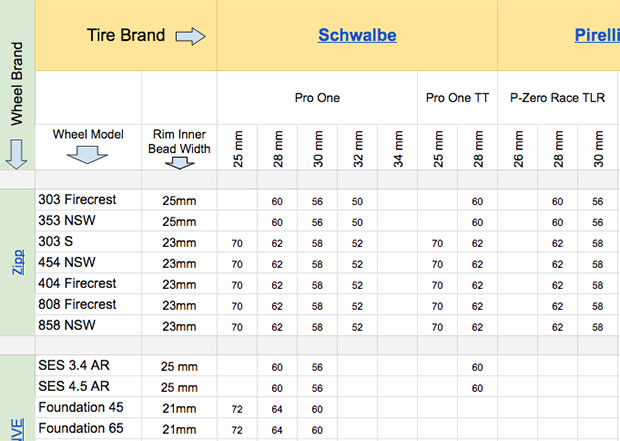
One consequence of the sample pressures you’ll see here almost all the pressures are below 5 bar (72.5psi). That pressure is only seen when a 25mm tire is mounted on a wheel; never when a 28mm tire is mounted. This is important because the ETRTO (more on that organization below) has placed a 5 bar limit on pressures when a hookless beaded rim is on the wheel. In our chart the only way 5 bar is hit with a 28mm tire is when a cyclist is pretty weighty.
Mind, there’s some disagreement here. The Silca tire calculator shows an ideal pressure for a 200lb “system” (bike + rider) on average pavement riding 28mm tires in the high-70s psi. Zipp in its published data finds that much lower pressures test better: more like low to mid 60s psi.
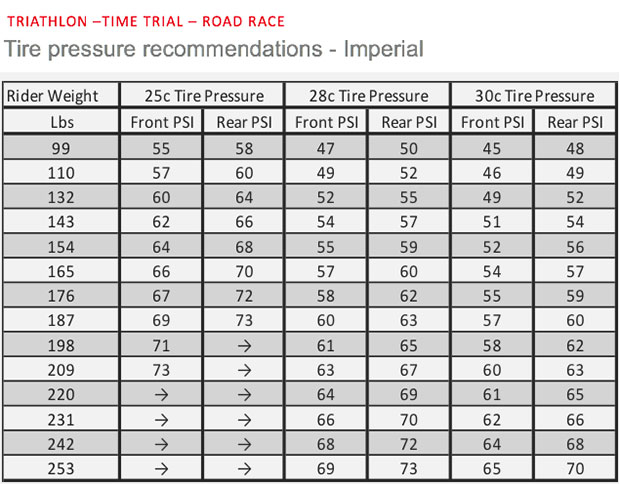
What do I mean by “sample” pressure. There are 4 tire pressure calculators that I know of that one might use for a wheel of this type: from Silca, Zipp, ENVE and CADEX. I’m sure there are many more. Universal agreement you will not find among these guides or calculators. But they’re not that far off one from each other. I have ridden most of the wheels using hookless rims by most of the brands making wheels you might want to ride for road or tri, and I’ve folded my own experience in with what I glean from these other sources to give you not an ideal pressure – because that assumes I wear the mantle of authority in this field and I do not – but a sample pressure. What I list here is a pressure that one could ride and that pressure is not far off from what you’d find suggested by most or all the brands making wheels with hookless beads.
The test case for these pressures on our chart is a 150lb rider aboard a tri bike that might weigh around 20lb. The reason I chose "tri bike" is that the weight will be fairly evenly distributed between the front and rear wheels. Had I chosen a road bike I would have 2 pressures for you: for the front and rear tire (perhaps subtract 2lb from the front tire's pressure and ad 2lb to the rear). The more weight, the more pressure. Generally, the larger the tire the lesser the pressure, and the wider the inner bead width of the rim the pressure is also lessened slightly.
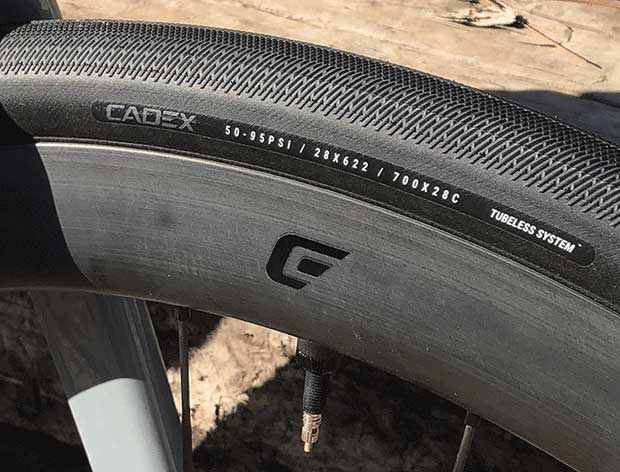
The main takeaway is that pressures I would place in a tire for training or racing is quite a bit lower than has been typical in decades past. The ideal tire for time trials (and triathlons) used to be 20mm, and that has grown to 23mm and now to 25mm. One question is whether the ideal tire width for timed racing will remain 25mm or will grow larger yet, to perhaps 28mm. This is the thesis put forward by Zipp in last year’s launch of its newest wheels. As the wheel and tire air volume increases the pressures for best performance generally comes down. This chart will show you that the tires I’m riding for road and tri take pressures anywhere from 50psi to 65psi.
All the wheels I ride for every discipline are now tubeless. Almost all the wheels I ride have hookless beads. The case for hookless beads is: stronger, truer, straighter wheels. Theoretically, because they’re also easier to manufacture the price can be lower (as we see with the Zipp 303 S) Or, the wheel weight might come down through a better mix of materials and processes, but the price could remain stable.
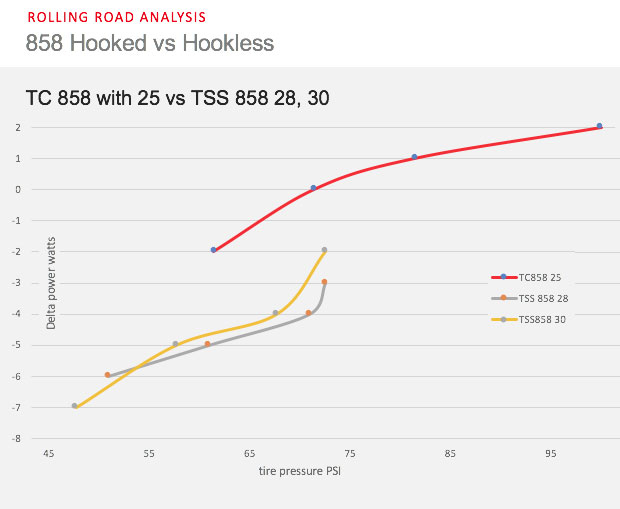
The most notable feature difference between these wheels, brand to brand, is whether there is a bead lock on the shelf of the rim. Zipp finds a bead lock unnecessary, while CADEX (as one example) likes the bead lock. The bead lock has been considered a safety feature but Zipp in its analysis concludes that the bead lock does not matter. In my own use the main feature of the bead lock is that it appears to me to make some wheels more airtight, and when the right vulcanized tire is mounted on a CADEX wheel there’s almost zero leakdown.
My favorite road wheels, for my road bike, are so far the CADEX AR 35, which isn’t a road wheel at all but when mounted with a 30mm or 32mm tire is a bombproof but lightweight wheel that I can use with confidence; and the Zipp 353 NSW and everything good you can say about that CADEX you can say about that Zipp wheel. Note that both these wheels have an inner bead width of 25mm and that’s great but it requires a tire no thinner than 28mm and I usually ride these wheels with 30mm or 32mm road tires.
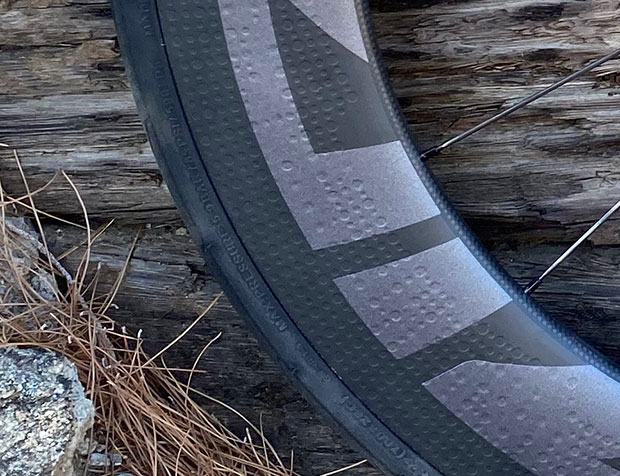
The tires I ride are almost always tubeless ready and that’s a term of art. These tires leak down, by design. They have semi-permeable sidewalls and they require the use of a latex sealant. This sealant is not simply a puncture filler, it coats the sidewalls and acts as a proxy for a latex tube. Maybe I don’t need to do this, but every time I charge or recharge a tubeless ready tire with sealant I turn the wheel flat on each side and spin the wheel to coat the sidewalls.
The European wheel and tire standard setter – the ETRTO – sets standards for wheel makers and since 2019 has had standards for wheels make with hookless beaded rims. Tire makers must make their tires in a way that conforms with those wheel standards and most (not all) tubeless or tubeless ready tires out in 2019 or later conform to hookless compatible standards. Some tire makers just don’t talk about hookless and that’s unfortunate. They ought to say unambiguously whether these newer (post-2019 launched) road tires are hookless compatible or not. Veloflex – makers of what might be the fastest race tires currently available – does unambiguously state its hookless compliance. Bravo.
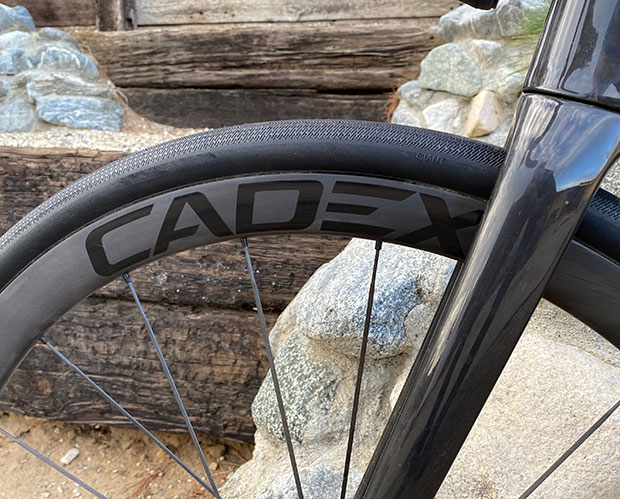
Some wheel brands test tires. While laudable, I don’t see how this is long-term sustainable. ENVE for example clears a tire for use on its hookless wheels after stretch and blow-off tests are performed. But this leaves a lot of holes in our compatibility chart because that brand might test a tire in one size (say, 25mm) but not in the other larger sizes. Those larger sizes are the most desirable for hookless rims, so, those tires are not cleared by ENVE for use and if I can’t use my intended tire why would I want to buy the wheel? Zipp’s approach is to simply ask the tire brand whether it manufactures the tire according to ETRTO spec. If it does, it’s considered a match by Zipp.
I would like to see ENVE either test tires at a faster pace, or just stipulate that for its ETRTO-compliant hookless wheels all ETRTO-compliant tires are a match if used according to ETRTO guidelines (no more than 5 bar pressure; stated tire width must be at least 2mm larger than the rim’s inner bead width).
There is nothing wrong with a hooked bead on a tubeless tire. I just happen to like the wheels I’m riding with hookless beads. You’re going to see more and more aero wheels made by brands like CADEX and Zipp, and others, and probably this year – 2023 – is the year that the deepest wheels become available with rims featuring hookless beads.


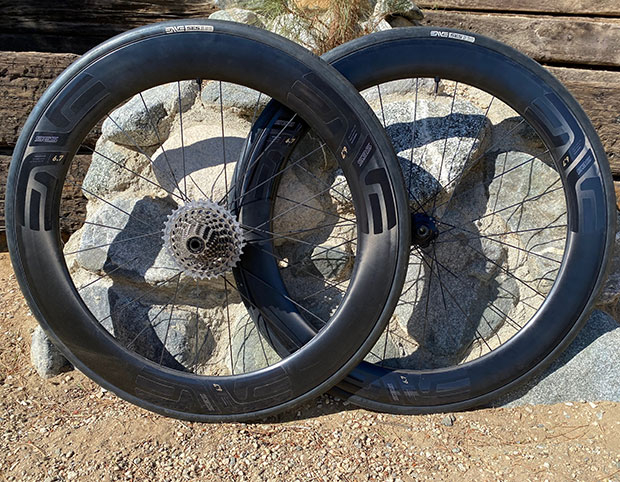
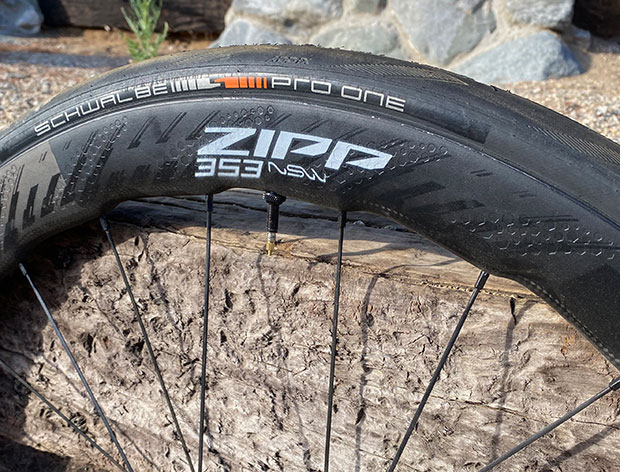
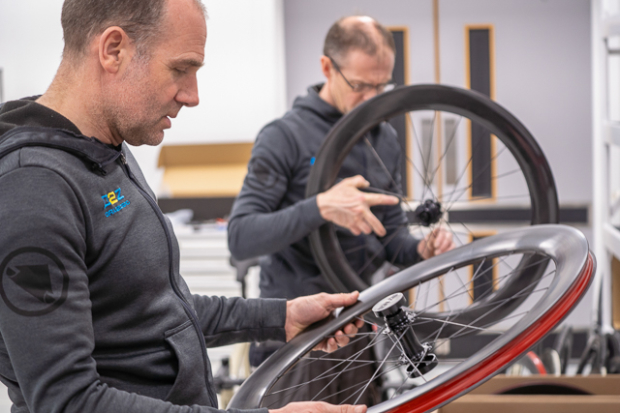
Start the discussion at slowtwitch.northend.network